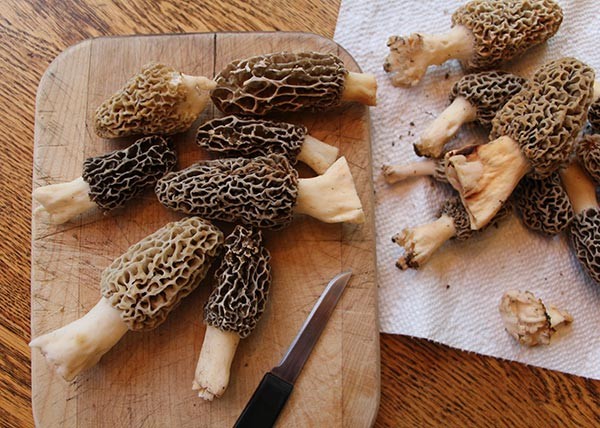
During morel season the south end of the kitchen counter gets commandeered: there’s a maple cutting board, brush, paring knife, bowl for trim, and the day’s take of mushrooms piled on a paper towel, or paper towels if the hunting has been good. A cast iron pan on the range sees daily use; the overflow we can’t eat immediately gets threaded onto fishing line and hung to dry in the dark threshold between the living room and office. The morels go on fat and lush – a mature yellow might be the length of your hand – and in a week’s time they’ve shriveled down to a fraction of their original size, perfect for packing into quart mason jars and freezing.
My knowledge of and affection for mushrooms is blue collar, forged through foraging. And yet I peripherally follow the taxonomic debates around morels because I like things to make sense, and calling every morel, no matter how different looking and different behaving, Morchella esculanta – that a name coined by Linnaeus referring to a European mushroom – has never been satisfying. Scientists are working to clarify things – this paper that ran in the Journal Mycologia suggests 19 subspecies in North America and Canada. And yet there’s still a fair amount of haze around the subject. The current thinking is that the Northeastern “yellow morel” should now be called M. esculentoides, so amend your old guidebooks if you haven’t already. But there’s still that pesky matter of whether the gray ones are the same species as the yellow ones. Many foragers come to believe they are distinct, because if you pick enough you start to see patterns. I have hunting grounds where the morels seem reliably yellow, and others where they seem reliably gray. The yellows seem to come a bit earlier than the grays, and get bigger. But according to DNA-driven research that’s looked into this, we’re wrong, and the so-called grays are just immature versions of the yellows.


Discussion *